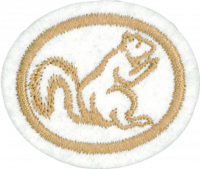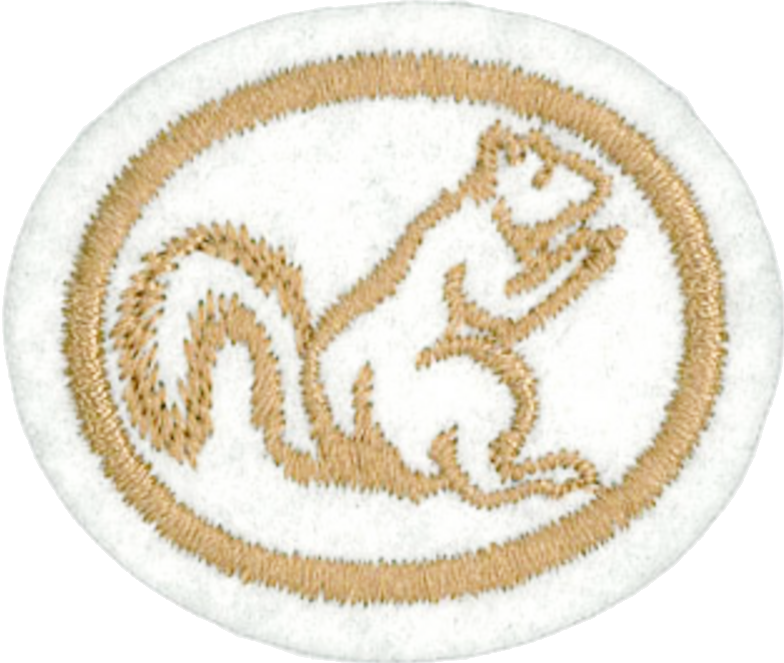|
|
| Line 46: |
Line 46: |
| | {{CloseReq}} <!-- 2 --> | | {{CloseReq}} <!-- 2 --> |
| | {{ansreq|page={{#titleparts:{{PAGENAME}}|2|1}}|num=3}} | | {{ansreq|page={{#titleparts:{{PAGENAME}}|2|1}}|num=3}} |
| − | <noinclude><div lang="en" dir="ltr" class="mw-content-ltr"> | + | <noinclude></noinclude> |
| − | </noinclude> | + | <!-- 3. Apresentar uma ou mais características peculiares de cada um dos seguintes grupos de mamíferos e mencionar uma ou mais espécies de mamíferos encontradas em cada ordem: --> |
| − | <!-- 3. Give one or more identifying characteristics of each of the following orders of mammals, and name one or more species of mammals found in each order: --> | + | <noinclude></noinclude> |
| − | <noinclude> | |
| − | </div></noinclude>
| |
| | {{ansreq|page={{#titleparts:{{PAGENAME}}|2|1}}|num=3a}} | | {{ansreq|page={{#titleparts:{{PAGENAME}}|2|1}}|num=3a}} |
| | <noinclude></noinclude> | | <noinclude></noinclude> |
| Line 156: |
Line 154: |
| | {{CloseReq}} <!-- 3 --> | | {{CloseReq}} <!-- 3 --> |
| | {{ansreq|page={{#titleparts:{{PAGENAME}}|2|1}}|num=4}} | | {{ansreq|page={{#titleparts:{{PAGENAME}}|2|1}}|num=4}} |
| − | <noinclude><div lang="en" dir="ltr" class="mw-content-ltr"> | + | <noinclude></noinclude> |
| − | </noinclude> | + | <!-- 4. Relacionar quatro mamíferos úteis e explicar a sua utilidade ao homem. --> |
| − | <!-- 4. List four beneficial mammals and tell how they are beneficial. --> | |
| − | ::Bats eat flying insects
| |
| − | </div>
| |
| | | | |
| | {{clear}} | | {{clear}} |
| Line 177: |
Line 172: |
| | {{CloseReq}} <!-- 4 --> | | {{CloseReq}} <!-- 4 --> |
| | {{ansreq|page={{#titleparts:{{PAGENAME}}|2|1}}|num=5}} | | {{ansreq|page={{#titleparts:{{PAGENAME}}|2|1}}|num=5}} |
| − | <noinclude><div lang="en" dir="ltr" class="mw-content-ltr"> | + | <noinclude></noinclude> |
| − | </noinclude> | + | <!-- 5. Relacione quatro coisas que os mamíferos fazem que são prejudiciais ao homem. --> |
| − | <!-- 5. List four things mammals do that are harmful. --> | |
| − | ::Skunks can make a neighborhood smell quite bad
| |
| − | ::Tigers, lions, bears, wolves and many other carnivorous mammals have killed and sometimes eaten people. They also prey on livestock.
| |
| − | ::Groundhogs, prairie dogs, gophers, moles and many other burrowing animals can create tripping hazards for humans, horses and other mammals
| |
| − | ::Elephants can do quite a bit of damage to gardens and yards
| |
| − | ::Mice can eat a large amount of grain and reproduce so rapidly that large quantities of food can disappear quite quickly.
| |
| − | ::Rats can carry disease such as bubonic plague
| |
| − | ::Deer can carry a disease known as chronic wasting disease
| |
| − | ::Beavers can back up streams and flood areas as well as cut down trees that are part of an orchard or yard
| |
| − | ::Many mammals can carry rabies or distemper and pass these diseases to humans or pets
| |
| − | ::Coyotes in urban settings can eat pets or spread garbage
| |
| − | ::Deer, moose and other large mammals are involved in thousands of car accidents every year. Sometimes these accidents include human fatalities.
| |
| − | ::Humans are the most dangerous destructive mammals of all.
| |
| − | Accept all reasonable answers.
| |
| − | </div>
| |
| | | | |
| | <noinclude></noinclude> | | <noinclude></noinclude> |
| | {{CloseReq}} <!-- 5 --> | | {{CloseReq}} <!-- 5 --> |
| | {{ansreq|page={{#titleparts:{{PAGENAME}}|2|1}}|num=6}} | | {{ansreq|page={{#titleparts:{{PAGENAME}}|2|1}}|num=6}} |
| − | <noinclude><div lang="en" dir="ltr" class="mw-content-ltr"> | + | <noinclude></noinclude> |
| − | </noinclude> | + | <!-- 6. Relacionar quatro mamíferos que são completamente aquáticos e indicar sua área de distribuição. --> |
| − | <!-- 6. List four mammals that are completely aquatic and designate their natural range. --> | |
| − | :Salt Water Mammals
| |
| − | ::1. Whales
| |
| − | :::a. ''Balaenoptera musculus'' (Blue Whale) lives near the surface of the ocean and can be found in every ocean of the world.
| |
| − | ::::[[image:Faroe stamp 402 blue whale (Balaenoptera musculus).jpg|140px]] [[image:cetacea_range_map_Blue_Whale.PNG|240px]]
| |
| − | :::b. ''Delphinapterus leucas'' (Beluga Whale) lives in Arctic and Sub-Arctic waters. Some will migrate to warmer waters in the summer and even swim up northern rivers into brackish (partly-salty) waters to hunt.
| |
| − | ::::[[image:Belugawhale_MMC.jpg|240]] [[image:Cetacea range map Beluga.png|240px]]
| |
| − | :::c. ''Balaena mysticetu'' (Bowhead Whale) lives solely in the Arctic near the surface of the ocean.
| |
| − | ::::[[image:Bowheads42.jpg|240px]] [[image:Cetacea range map Bowhead Whale.png|240px]]
| |
| − | :::d. ''Megaptera novaeangliae'' (Humpback Whale) lives in all the oceans in the world except the polar seas. They live mostly in shallow water.
| |
| − | ::::[[image:Humpback_Whale_underwater_shot.jpg|240px]] [[image:Cetacea range map Humpback Whale.png|240px]]
| |
| − | ::2. Dolphins
| |
| − | :::a. ''Tursiops truncatus'' (Bottlenose Dolphins) live in warm and temperate seas and oceans all over the world.
| |
| − | ::::[[Image:Bottlenose Dolphin KSC04pd0178 head only.JPG|240px]] [[Image:Cetacea_range_map_Bottlenose_Dolphin.png|240px]]
| |
| − | :::b. ''Orcinus orca'' (Orcas or Killer Whales) live in all the oceans and many of the seas in the world. (Even though this aquatic mammal has the name of "whale" it is in the dolphin (''Delphinidae'') family)
| |
| − | ::::[[Image:Killerwhales_jumping.jpg|240px]] [[Image:Cetacea_range_map_Orca.PNG|240px]]
| |
| − | :::c. ''Stenella longirostris'' (Spinner Dolphin):
| |
| − | ::::1.Eastern Spinner Dolphin (''S. l. orientalis''), found in the tropical eastern Pacific.
| |
| − | ::::2.Central American or Costa Rican Spinner Dolphin (''S. l. centroamericana''), also found in the tropical eastern Pacific.
| |
| − | ::::3.Gray's or Hawaiian Spinner Dolphin (''S. l. longirostris''), found in the central Pacific around Hawaii but represents a mixed bag of broadly similar subtypes found throughout the world.
| |
| − | ::::4.Dwarf Spinner Dolphin (''S. l. roseiventris''), first found in the Gulf of Thailand.
| |
| − | ::::[[Image:SpinnerDolphinsoffKauai_1999-03-15.jpg|240px]] [[Image:Cetacea_range_map_Spinner_Dolphin.PNG|240px]]
| |
| − | :::d. ''Lagenorhynchus obliquidens'' (Pacific White Sided Dolphin) lives in the Pacific Ocean
| |
| − | ::3. Porpoise
| |
| − | :::a. ''Neophocaena phocaenoides'' (Finless Porpoise) lives in the shallow coastal waters of Asia especially around India, China, Indonesia and Japan. A unique fresh water population is found in the Yangtze River. At the western end, their range includes the length of the western coast of India and continues up into the Persian Gulf.
| |
| − | :::: [[Image:FinlessPorpoise3.jpg|240px]] [[Image:Cetacea_range_map_Finless_Porpoise.PNG|240px]]
| |
| − | :::b. ''Phocoena phocaena'' (Harbour Porpoise) is widespread in cooler coastal waters in the Northern Hemisphere, largely in areas with a mean temperature of about 15°C. In the Atlantic, Harbour Porpoises may be present in a concave band of water running from the coast of western Africa round to the eastern seaboard of the United States, including the coasts of Spain, France, the United Kingdom, Ireland, Norway, Iceland, Greenland and Newfoundland.
| |
| − | ::::[[Image:Porpoise_touching.jpg|240px]] [[Image:Cetacea_range_map_Harbour_Porpoise.PNG|240px]]
| |
| − | :::c. ''Phocoena sinus'' (Vaquita) is a very endangered species that lives only in the Sea of Cortez, the northern part of the Gulf of California.
| |
| − | ::::[[Image:Vaquita.jpg|240px]] [[Image:Cetacea_range_map_Vaquita.PNG|240px]]
| |
| − | :::d. ''Phocoenoides dalli'' (Dall's Porpoise) ranges across the north Pacific Ocean from southern California to southern Japan (including the Sea of Japan in the south up to the Bering Sea in the north).
| |
| − | ::::[[Image:Dalls_Porpoise_Back.jpg|240px]] [[Image:Cetacea_range_map_Dall%27s_Porpoise.PNG|240px]]
| |
| − | </div>
| |
| | | | |
| | {{clear}} | | {{clear}} |
| Line 239: |
Line 186: |
| | {{CloseReq}} <!-- 6 --> | | {{CloseReq}} <!-- 6 --> |
| | {{ansreq|page={{#titleparts:{{PAGENAME}}|2|1}}|num=7}} | | {{ansreq|page={{#titleparts:{{PAGENAME}}|2|1}}|num=7}} |
| − | <noinclude><div lang="en" dir="ltr" class="mw-content-ltr"> | + | <noinclude></noinclude> |
| − | </noinclude> | + | <!-- 7. Qual é o maior mamífero do mundo? Onde ele vive, como se alimenta e o que come? --> |
| − | <!-- 7. Name the largest mammal in the world and tell where it lives, how it feeds, and what it eats. --> | |
| − | </div>
| |
| | | | |
| | {{clear}} | | {{clear}} |
| Line 253: |
Line 198: |
| | {{CloseReq}} <!-- 7 --> | | {{CloseReq}} <!-- 7 --> |
| | {{ansreq|page={{#titleparts:{{PAGENAME}}|2|1}}|num=8}} | | {{ansreq|page={{#titleparts:{{PAGENAME}}|2|1}}|num=8}} |
| − | <noinclude><div lang="en" dir="ltr" class="mw-content-ltr"> | + | <noinclude></noinclude> |
| − | </noinclude> | + | <!-- 8. Relacione oito espécies de mamíferos silvestres que você já observou e identificou pessoalmente na natureza. --> |
| − | <!-- 8. List eight species of wild mammals that are in your region. Spend at least 5 hours searching for wild mammals in their natural habitat. --> | |
| − | {{covid|tip=When confined to home, this can be done in the backyard.}}
| |
| − | </div>
| |
| | | | |
| | {{clear}} | | {{clear}} |
| Line 264: |
Line 206: |
| | {{CloseReq}} <!-- 8 --> | | {{CloseReq}} <!-- 8 --> |
| | {{ansreq|page={{#titleparts:{{PAGENAME}}|2|1}}|num=9}} | | {{ansreq|page={{#titleparts:{{PAGENAME}}|2|1}}|num=9}} |
| − | <noinclude><div lang="en" dir="ltr" class="mw-content-ltr"> | + | <noinclude></noinclude> |
| − | </noinclude> | + | <!-- 9. Escrever ou contar uma história sobre "Mamíferos Silvestres que já observei". --> |
| − | <!-- 9. Write or tell a story about "Wild Mammals I Have Observed". --> | |
| − | </div>
| |
| | | | |
| | {{clear}} | | {{clear}} |


